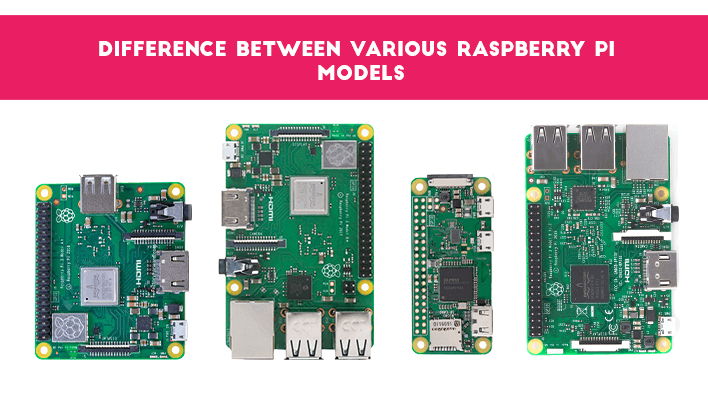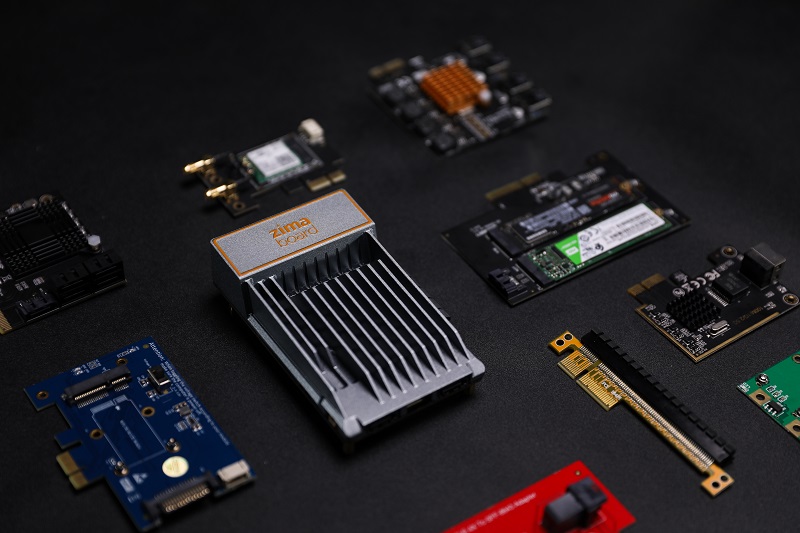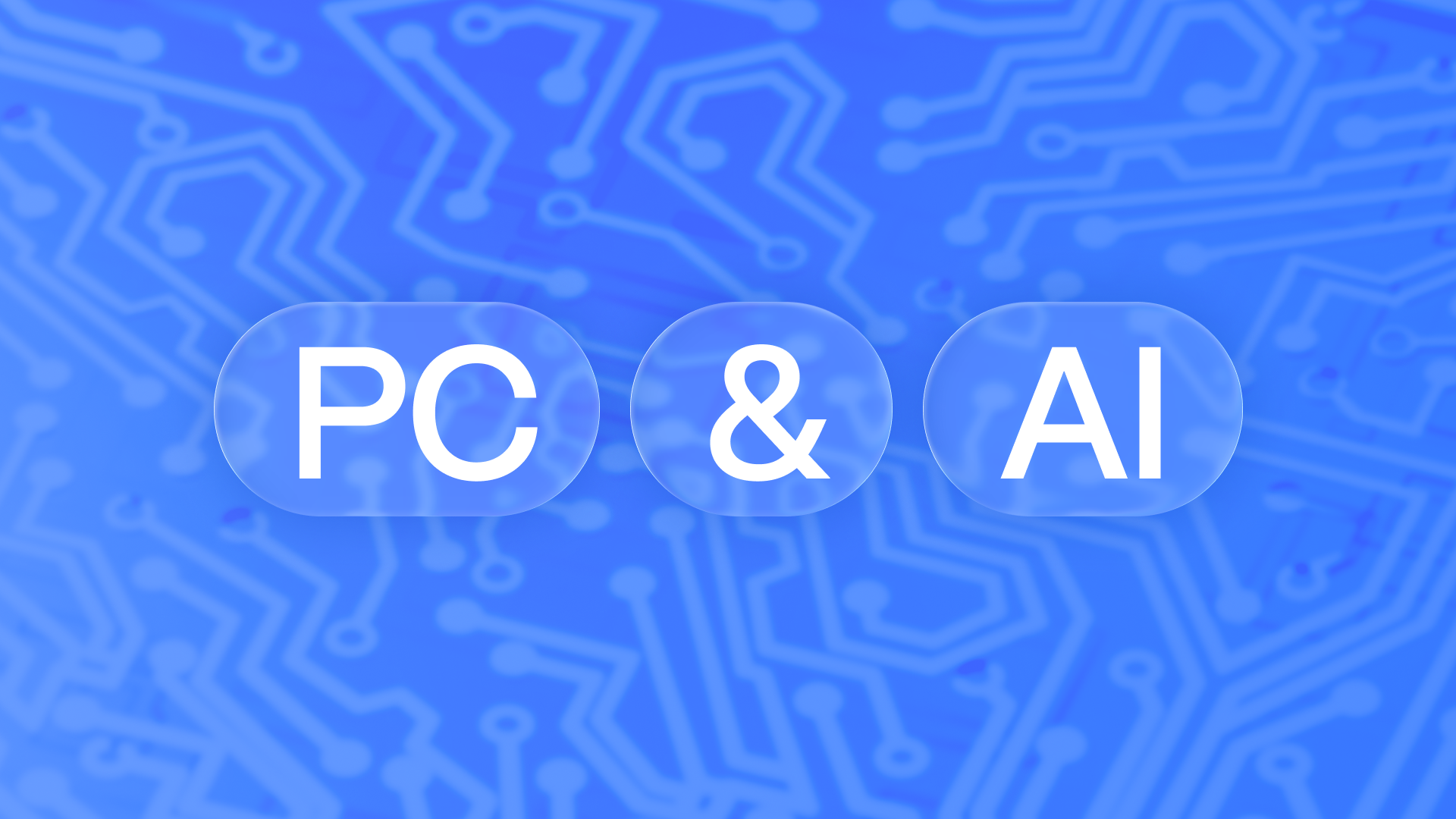Reviews
Reviewing Raspberry Pi as a Personal Server
![]() John Guan - Mar 31, 2023
John Guan - Mar 31, 2023
The Raspberry Pi is a series of low-cost, credit card-sized single-board computers developed by the Raspberry Pi Foundation in the United Kingdom. The primary goal of this project is to promote the teaching of basic computer science in schools and developing countries. Since the initial release of the Raspberry Pi Model B in 2012, several iterations have been released, each with improved performance and functionality.

The Raspberry Pi is known for its versatility and ease of use, making it a popular choice for hobbyists, educators, and developers. It can be used in various projects, such as home automation, robotics, media centers, retro gaming consoles, and much more.
Part 1: Difference Between Major Raspberry Pi Models
Part 2: The reason to use Raspberry Pi as a personal server
Part 3: Raspberry Pi 4 Price and Configurations
Part 4: Raspberry Pi Buying Tips
Part 5: Alternative Raspberry Pi 4B as Personal Server – ZimaBoard
Part 1: Difference Between Major Raspberry Pi Models
| Launched on February 2, 2015 | Launched on February 29, 2016 | Launched on June 24, 2019 |
| Raspberry Pi 2 Model B: | Raspberry Pi 3 Model B: | Raspberry Pi 4 Model B: |
| CPU: 900 MHz quad-core ARM Cortex-A7 | CPU: 1.2 GHz 64-bit quad-core ARM Cortex-A53 | CPU: 1.5 GHz 64-bit quad-core ARM Cortex-A72 |
| RAM: 1GB LPDDR2 | RAM: 1GB LPDDR2 | RAM: Available in 2GB, 4GB, or 8GB LPDDR4 variants |
| USB Ports: 4x USB 2.0 | USB Ports: 4x USB 2.0 | USB Ports: 2x USB 2.0, 2x USB 3.0 |
| Networking: 10/100 Ethernet (RJ45) | Networking: 10/100 Ethernet (RJ45), built-in Wi-Fi (802.11n), and Bluetooth 4.2 (including Bluetooth Low Energy) | Networking: Gigabit Ethernet (RJ45), built-in Wi-Fi (802.11ac), and Bluetooth 5.0 (including Bluetooth Low Energy) |
| Video & Audio: HDMI, 4-pole 3.5mm jack (analog audio and composite video) | Video & Audio: HDMI, 4-pole 3.5mm jack (analog audio and composite video) | Video & Audio: 2x micro HDMI (supports up to 4K resolution), 4-pole 3.5mm jack (analog audio and composite video) |
| GPIO: 40-pin header | GPIO: 40-pin header | GPIO: 40-pin header |
| Storage: MicroSD card slot | Storage: MicroSD card slot | |
| No built-in Wi-Fi or Bluetooth |

The Raspberry Pi 3 Model B introduced built-in Wi-Fi and Bluetooth connectivity, which was not available in the Raspberry Pi 2 Model B. And the Raspberry Pi 4 Model B represents a significant upgrade in performance and functionality over its predecessors. It features a faster processor, multiple RAM options, USB 3.0 support, Gigabit Ethernet, dual-display support with 4K resolution, and improved Wi-Fi and Bluetooth capabilities.
Part 2: Why do you need a Raspberry Pi as a personal server?
Here are some specific examples of what can be done with the Raspberry Pi 4B, as well as its limitations: What can be done:
- General-purpose computing: The Raspberry Pi 4B is suitable for web browsing, email, word processing, and other basic computing tasks.
- Media center: With its support for 4K video playback and dual HDMI outputs, the Raspberry Pi 4B can serve as a capable media center using software like Kodi or Plex.
- Home automation: Raspberry Pi 4B can be used to control and automate various aspects of your home, such as lighting, heating, and security systems, using software like Home Assistant or openHAB.
- IoT projects: Raspberry Pi 4B can serve as the brain of various IoT devices and projects, collecting and processing data from sensors, and controlling actuators or other connected devices.
- Web server: Raspberry Pi 4B can host small to medium websites or web applications using software like Apache or Nginx, as well as database servers like MySQL or PostgreSQL.
- AI and machine learning: With its improved performance, the Raspberry Pi 4B can handle basic AI and machine learning tasks, such as image recognition or natural language processing, using libraries like TensorFlow Lite or sci-kit-learn.
Part 3: Raspberry Pi 4 Price and Configurations
- Raspberry Pi 4 Model B (2GB RAM): $35 USD
- Raspberry Pi 4 Model B (4GB RAM): $55 USD
- Raspberry Pi 4 Model B (8GB RAM): $75 USD

Part 4: Raspberry Pi Buying Tips
There are some details you need to notice!
- These prices are for the standalone Raspberry Pi 4 Model B board and do NOT include accessories such as a power supply, microSD card, HDMI cable, or case, which may be required for your projects.
- For the Raspberry Pi 4 Model B, the minimum recommended power supply is a 5.1V 3A USB-C power adapter. It is important to use a high-quality power supply to ensure stable operation and prevent potential issues related to insufficient power.
- Pi 4 uses micro HDMI connectors for video output, which is different from the standard HDMI connector found on previous models. You’ll need a cable with a micro HDMI connector on one end (to connect to the Raspberry Pi) and a standard HDMI connector on the other end (to connect to the display).
Generally, you can expect to spend anywhere between $50 to $120 USD for a comprehensive kit.
Due to the low-profit margins on Raspberry Pi mainboards, kit manufacturers typically make higher profits from peripheral products. To choose high-quality accessories, there are some details worth paying attention to.
- Power supply: Up to 3 amps @ 5 volts. Look for certifications and safety standards compliance, such as UL, CE, or FCC.
- MicroSD card: A well-known and reliable brand, such as SanDisk, Samsung, or Kingston. Check the card’s speed class rating, which affects the performance of the Raspberry Pi. A Class 10 or UHS-1 (U1) card is recommended for most use cases. And of course, consider the storage capacity.
- Micro HDMI adapter: Ensure the adapter supports the desired resolution and refresh rate of your display (e.g., 4K at 60Hz)
- Ethernet cable: Choose the appropriate category (e.g., Cat5e, Cat6, or Cat7) based on your network’s speed requirements.
Power supply and MicroSD are the key components you need to notice. And the latest step is choosing a well-designed Raspberry Pi case.
Part 5: Alternative Raspberry Pi 4B as Personal Server – ZimaBoard
ZimaBoard is a single-board server designed for makers and creators who need a compact and powerful server. ZimaBoard features an Intel Quad-core processor, up to 8GB of RAM, 2x Gigabit Ethernet, multiple USB ports, 2x SATA storage, and a PCIe port. It also includes a custom cooling system that allows the board to operate without a fan.

Key Features of ZimaBoard Personal Server:
- Processor: The ZimaBoard is powered by an Intel Celeron processor, which provides high performance and efficient operation.
- RAM: The ZimaBoard can support up to 8GB of DDR4 RAM, which allows it to handle complex tasks and run multiple applications simultaneously.
- Storage: The ZimaBoard has a SATA III port for connecting hard drives or SSDs, which provides fast and reliable storage options.
- Expansibility: PCIe port, which allows users to connect various PCIe devices to the board.
- Networking: The ZimaBoard features Gigabit Ethernet for fast and reliable networking, as well as WiFi and Bluetooth connectivity.
- USB: The ZimaBoard has multiple USB 3.0 ports for connecting peripherals, such as keyboards, mice, and external storage devices.
- Cooling: The ZimaBoard has a custom cooling system that allows it to operate without a fan, which provides silent and efficient operation.
- Operating System: The ZimaBoard is x86 based device, which means it supports various operating systems, including Ubuntu, Debian, CentOS, OpenWrt, VyOS, OMV, FreeNAS, pfSense, and so on.
- Compatibility: The ZimaBoard is compatible with popular software and development tools, such as Docker, Kubernetes, Ansible, and Git.
When purchasing the ZimaBoard, you don’t need to worry about acquiring an extra power supply or microSD card, unlike the Raspberry Pi. This is because the ZimaBoard comes with onboard eMMC storage and a high-quality 12V3A power adapter, ensuring a stable power supply upon receiving the device.
Conclusion
Both Raspberry Pi and ZimaBoard offer affordable and versatile options for personal server building, and they can help users learn new skills and gain knowledge in the process. The advantage of using Raspberry Pi is its low cost and widespread community support, which provides a wealth of resources and tutorials for beginners.
The advantage of using ZimaBoard is its high performance and advanced features, which make it a suitable choice for more demanding tasks and projects.
In summary, Raspberry Pi and ZimaBoard are both excellent options for building a personal server, depending on your specific needs and budget. They offer a range of server applications and features that can help users learn and grow their skills in the field of computing and technology.


